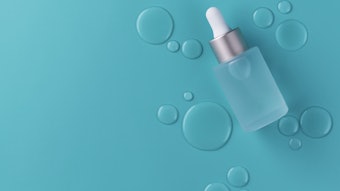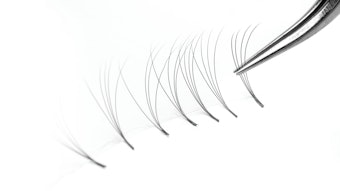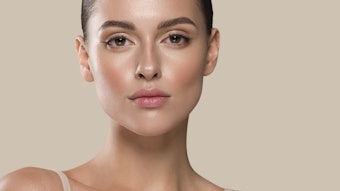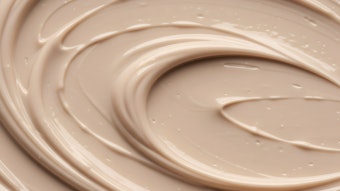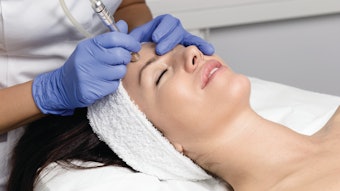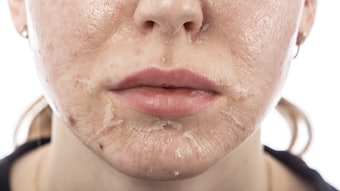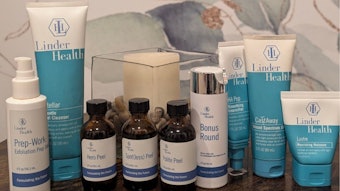
Acne has plagued skin throughout history, but its remedies have evolved over time. While sulfur was used by the Ancient Egyptians, Grecians and Romans to draw out impurities,1 benzoyl peroxide2 became a main acne treatment in the 1920s.3
While both of these ingredients remain effective, there is one ingredient that stands out as a game-changer in treating acne—vitamin A.
Vitamin A and its various derivatives have been used to clear impurities, rejuvenate skin and increase overall skin health since its introduction in the 1970s.4 Vitamin A can be used in its various forms—in the treatment room and at home—to support acne and bring skin back to optimal health.
Editor's note: Don't miss the Treatment How-to: Vitamin A for Acneic Skin in the sidebar on the left!
Vitamin A Derivatives for Acne
All forms of vitamin A have a positive impact on acneic skin. As a capsule supplement, vitamin A serves as a potent antioxidant to minimize the free radicals that decrease the skin’s ability to regenerate and purge impurities that cause uneven tone and texture.
Vitamin A specifically improves acne conditions by reducing the production of excessive oil in the skin.
Its ability to dry up or decrease oil and sebum make it a valuable supplement and topical for acne sufferers.
This is the premise for oral isotretinoin, commonly known as Accutane*. An interesting side note, many sinus sufferers have also found value in using vitamin A capsules to reduce sinus conditions.
While using vitamin A in its most natural form is the first step in treating a skin condition, it has its limitations in the correction and elimination of severe acne.
Vitamin A derivatives promote the drainage of existing comedones, prevent the development of microcomedones and help with the formation of tiny blood vessels and increased collagen production. This improves the overall appearance of acneic skin and reduces the aggressiveness of scar tissue.
In esthetics, the two most common forms of vitamin A are retinol and retinaldehyde, both of which impact overall acne problems quite well.
Retinols
Retinols are converted by the skin to retinoic acid, where they become active. This derivative actually includes several chemical compounds—commonly referred to as retinoids: retinal (aldehyde form), retinoic acid (acid form) and retinyl ester (ester form).
Retinoids, in general, support most all acne conditions, and it was this form of the vitamin that led to the development of tretinoin, commonly referred to as Retin-A**, in the early 1970s. It works by reducing cellular buildup and sebaceous oil activity, thereby minimizing the breeding ground for bacteria.
Retinaldehyde
The stable precursor to retinoic acid, retinaldehyde, has recently been taken to the next level through encapsulation.
Like retinol, it is a pro-drug that converts in the skin to retinoic acid. What sets this ingredient apart, however, is its mildness.
Retinaldehyde produces the least amount of skin irritation of all vitamin A derivatives.
This makes it an ideal option for nearly all skin types and allows it to be combined with other acne treatments, such as alpha and beta hydroxy acids, and benzoyl peroxides. It also has one less step involved in the conversion to retinoic acid.
Encapsulated retinaldehyde performs closest to retinoic acid in topical formulations. The encapsulation process boosts its clear skin benefits, stimulating cellular cohesion and eliminating bacteria.
Since it is less irritating to the skin, the encapsulated form also proves superior in treating acne. Research also has indicated the antimicrobial characteristics in this ingredient helps support against Propionibacterium acnes (P. acnes).
The Treatment Room and Beyond
Retinol formulas for the treatment room are valuable in developing proper therapy for acne, and having clients continue the use at home will support, and in many cases boost, any professional skin care treatment.
It is important to note, retinol itself does not have antibacterial properties, so including a topical that contains ingredients, such as benzoyl peroxide or totarol, and is designed to eliminate bacteria, makes for an effective duo to manage acne conditions.
A+ Corrective Treatment
The goal in the treatment room is to improve the look and feel of the skin, promote healing, decrease inflammation, eliminate bacteria and infuse the skin with antioxidant support.
Progressive and mid-depth peels using vitamin A will support these goals while breaking down congestion and removing dead skin buildup. Vitamin A, or retinol, peels also stimulate improvement, and soften and dissolve lesions and scar tissue.
This type of peel formula may also be blended with other acid forms to create some very interesting and innovative couture peels for impure, blemished skin types. An example of a treatment should include the following steps.
1. Cleanse
Cleanse with a pumpkin-based cleanser for antioxidant support and a deep cleanse, or a glycolic-based cleanser to soften skin cells and reduce surface buildup.
2. Exfoliate
Apply an enzyme to begin the exfoliation process. A combination of milk proteins, papaya, tangerine and low-strength acids—lactic (L), acetic, and salicylic—will slough away dead cells. A botanical acid-based liquid lotion also may be used to swab lesions and hormonal breakouts to clear up bacteria and stimulate rejuvenation.
3. Stimulate
Peel the skin with vitamin A-based peel formula. This will increase enzyme activity, lift away dead cells and stimulate cell turnover and the new growth of tiny blood vessels. The vitamin A peel also may be combined with a salicylic-based peeling cream, and a mandelic-acid and arginine (L) peel formula.
4. Nourish
Nourish and protect with epidermal growth factors, antioxidants, marine-based ingredients such as Thermus thermophilus and omega-6 essential fatty acids to regenerate, strengthen, rebuild and protect the skin. Always finish with a zinc-based mineral protection formula.
A+ Home Care
The goal for home care is to correct, rebuild and protect the skin. Vitamin A formulas will help promote cell turnover and increase skin respiration and circulation. These may be paired with bentonite and kaolin clay masks to further support purifying and detoxifying the skin.
Mandelic acid (L) and arginine (L) also work great for acne skins, as the duo helps gently correct and prevent the formation of damaging radicals.
Benzoyl peroxide, when applied to affected areas, also will release oxygen deep inside clogged pores to break down the skin and sebum, while healing, preventing incidents of scarring, and diminishing P. acnes bacteria.
Remind clients that balance is essential, and that some oil is good. When skin becomes too dry, oil production will increase.
When incorporating vitamin A into a home care regimen, send clients home with ingredients such as epidermal growth factors, allantoin and a zinc-based SPF to help rebuild and protect the skin.
When incorporating vitamin A to any client’s home care regimen, it is important to educate them on the precautions they must take to keep skin protected and healthy. They should eliminate exposure to the sun and always use a mineral-based SPF following a vitamin A treatment.
With home care, retinol formulas should be used at night, and again, protection should be used daily.
Though managing acne conditions may sometimes prove a long road, using vitamin A will provide flexibility in creating a customized treatment plan to help clients restore their skin to optimal health.
REFERENCES
- www.ncbi.nlm.nih.gov/pmc/articles/PMC3047935/
- MM Eby and KA Gazella, Return to Beautiful Skin, Basic Health Publications: Laguna Beach, CA, USA 275 (2008)
- applications.emro.who.int/imemrf/J_Pak_Assoc_Dermatol/J_Pak_Assoc_Dermatol_2013_23_3_315_319.pdf
- www.skintx.com/pdf/kligman_publication.pdf
(All websites accessed April 2, 2015)
*On June 26, 2009, Hoffman-La Roche Inc. discontinued the manufacture and distribution of Accutane in the United States. Versions of the medication by generic manufacturers are still available.
**Retin A is a trademarked name of Valeant Pharmaceuticals International, Inc.

